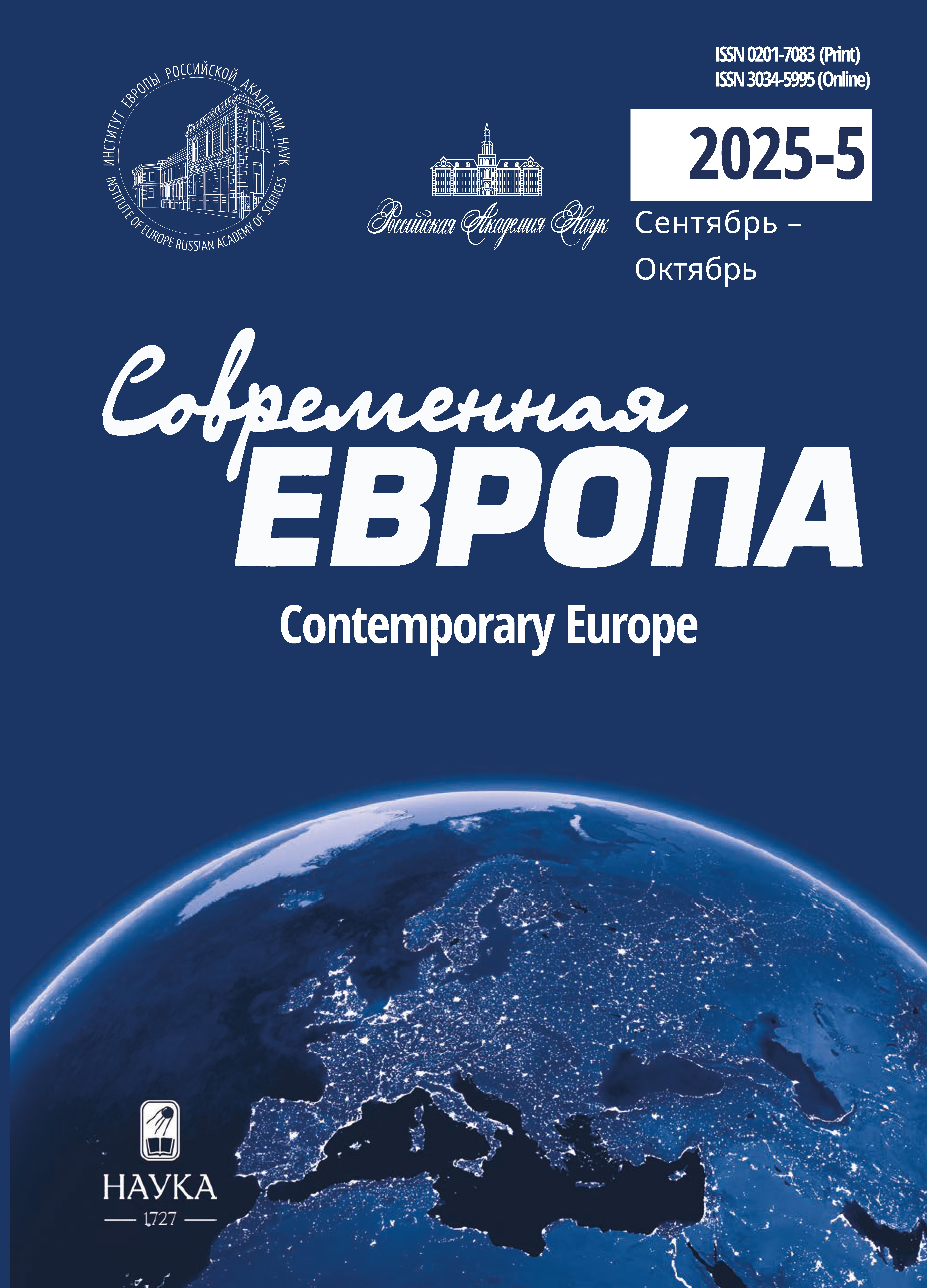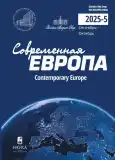Türkiye-Romania Relations: Peculiarities of Strategic Partnership (2011–2024)
- Authors: Islamov D.R1,2
-
Affiliations:
- National Research University "Higher School of Economics"
- Mediterranean Studies Centre
- Issue: No 5 (133) (2025)
- Pages: 56-66
- Section: EUROPEAN PROCESS: COUNTRIES AND REGIONS
- URL: https://rjsvd.com/0201-7083/article/view/695686
- DOI: https://doi.org/10.31857/S0201708325050055
- ID: 695686
Cite item
Abstract
Despite the growing importance of the bilateral dimension of Turkish-Romanian relations, limited attention has been paid to their study outside the context of the Balkan and/or Black Sea policies of these states, as well as NATO and EU's policy in the Black Sea region. This research is aimed at analyzing Türkiye-Romania relations comprehensively, taking into account the foreign policy framework of bilateral relations, the intensified military-diplomatic and military-technical cooperation, trade and economic, cultural and humanitarian interaction. The chronological framework of the article is conditioned by the fact that in 2011 the two parties signed the Declaration of Strategic Partnership, which elevated the status of Turkish-Romanian relations. In 2024, a High-Level Strategic Cooperation Council was established for substantive discussion of medium and long-term projects, which might lead to further strengthening of cooperation between the states. From 2011 to 2020 Ankara and Bucharest primarily sought to develop close cooperation in the economic, investment and energy sectors. In addition, from the second half of the 2010s, Türkiye has to actively pursued its cultural and humanitarian influence in Romania. Since 2021, as tensions around the Ukrainian issue grew and it entered an acute phase, military-political ties between the two countries began to intensify, not only through NATO, but also by building bilateral military-technical cooperation and initiating their own multilateral agreements.
Keywords
About the authors
D. R Islamov
National Research University "Higher School of Economics"; Mediterranean Studies Centre
Email: dam1948@yandex.ru
Candidate of Sciences (History), Research Fellow Moscow, Russia
References
- Биткова Т.Г. (2022) Интересы Румынии в Юго-Восточной Европе и взаимоотношения с Турцией. Анализ и прогноз. Журнал ИМЭМО РАН. № 3. С. 57–68. doi: 10.20542/afij-2022-3-57-68
- Иванова И.И. (2017) Балканская политика Турции в конце ХХ ‒ начале ХХI в. Труды Института востоковедения РАН. Вып. 5: Мусульманский мир на исторических рубежах России. Отв. ред. В.Я. Белокреницкий, Н.Ю. Ульченко. ИВ РАН, Москва. С. 131–148.
- Ишин А.В. (2016) О геополитической ситуации в Черноморском регионе: крымский взгляд. Проблемы постсоветского пространства. № 1. С. 38–46.
- Мамедов И.М. (2022) Балканы на перекрестке интересов Европейского союза и Турции. Современная Европа. № 1. С. 61–72. doi: 10.31857/S0201708322010053
- Пивоваренко А.А. (2024) Военно-политические аспекты политики Турции в ЮгоВосточной Европе. Современная Европа. № 7. С. 158–169. doi: 10.31857/S0201708324070131
- Путинцев И.С. (2019) Внешняя политика Румынии после вступления в НАТО и ЕС. Мировая экономика и международные отношения. Т. 63. № 11. С. 66–75. doi: 10.20542/01312227-2019-63-11-66-75
- Свистунова И.А. (2020) Балканская политика Турции: роль этно-конфессиональных меньшинств. Современная Европа. № 4. С. 61–71. doi: 10.15211/soveurope420206171
- Чеботарь О.Г. (2019) Политика Румынии в Черноморском регионе на современном этапе. Научно-аналитический журнал Обозреватель – Observer. № 12(359). С. 37–49.
- Энтина Е.Г. (2022) Незападные Балканы. Зебра Е; Галактика, Москва. 656 с.
- Lazăr A., Butnaru-Troncotă M. (2022) Assessing a decade of Romania-Turkey strategic partnership in an era of ambivalence and “De-Europeanisation”. Southeast European and Black Sea Studies. Vol. 22. Issue 1. P. 165–185. doi: 10.1080/14683857.2021.2024989
- Naumescu V. (2017) Stability, Ambiguity and Change in the Discourses of NATO allies in the Black Sea region: The Cases of Romania, Bulgaria and Turkey. Croatian International Relations Review. Vol. 23. No. 80. P. 187–209. doi: 10.1515/cirr-2017-0025
Supplementary files











